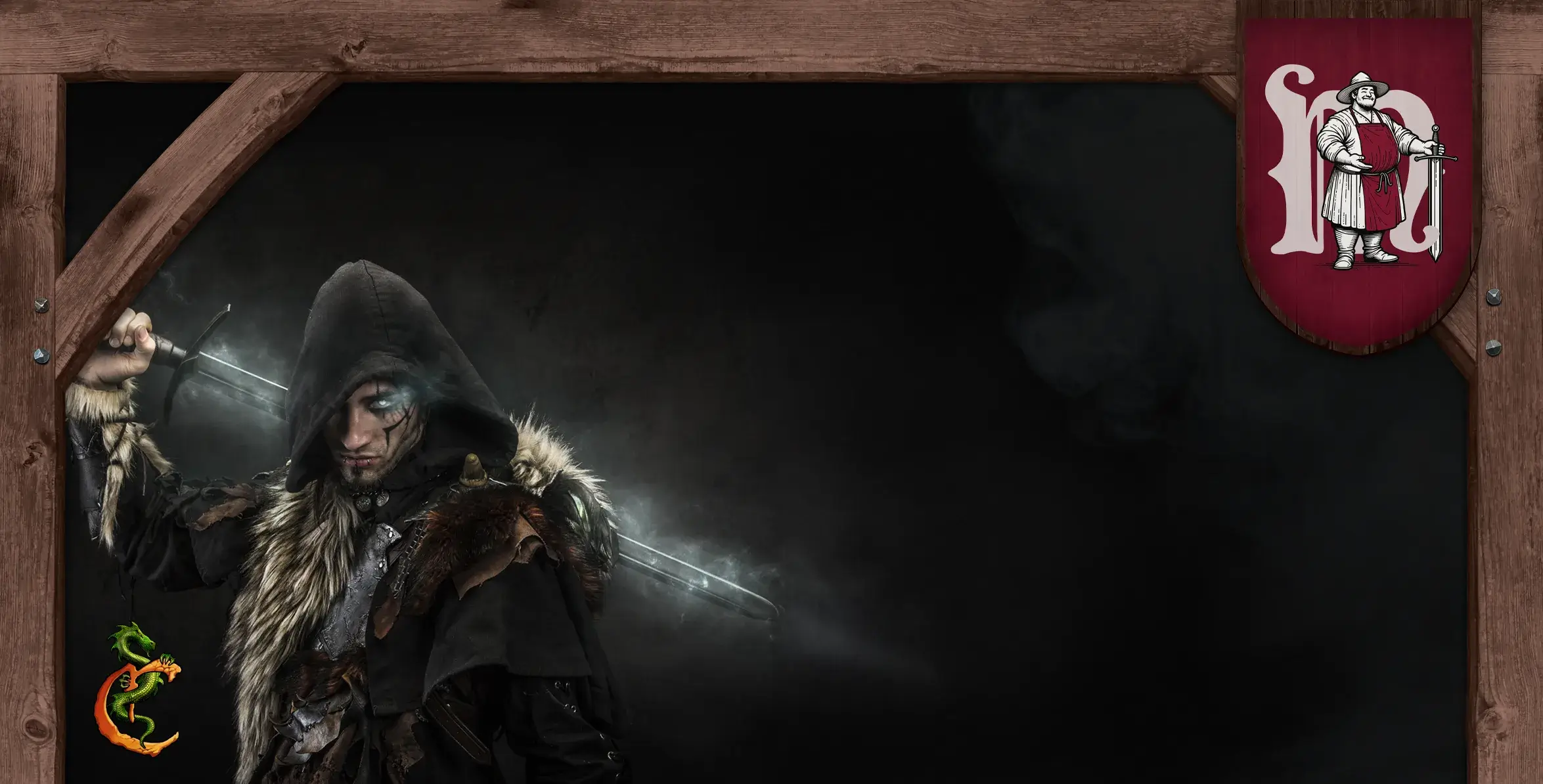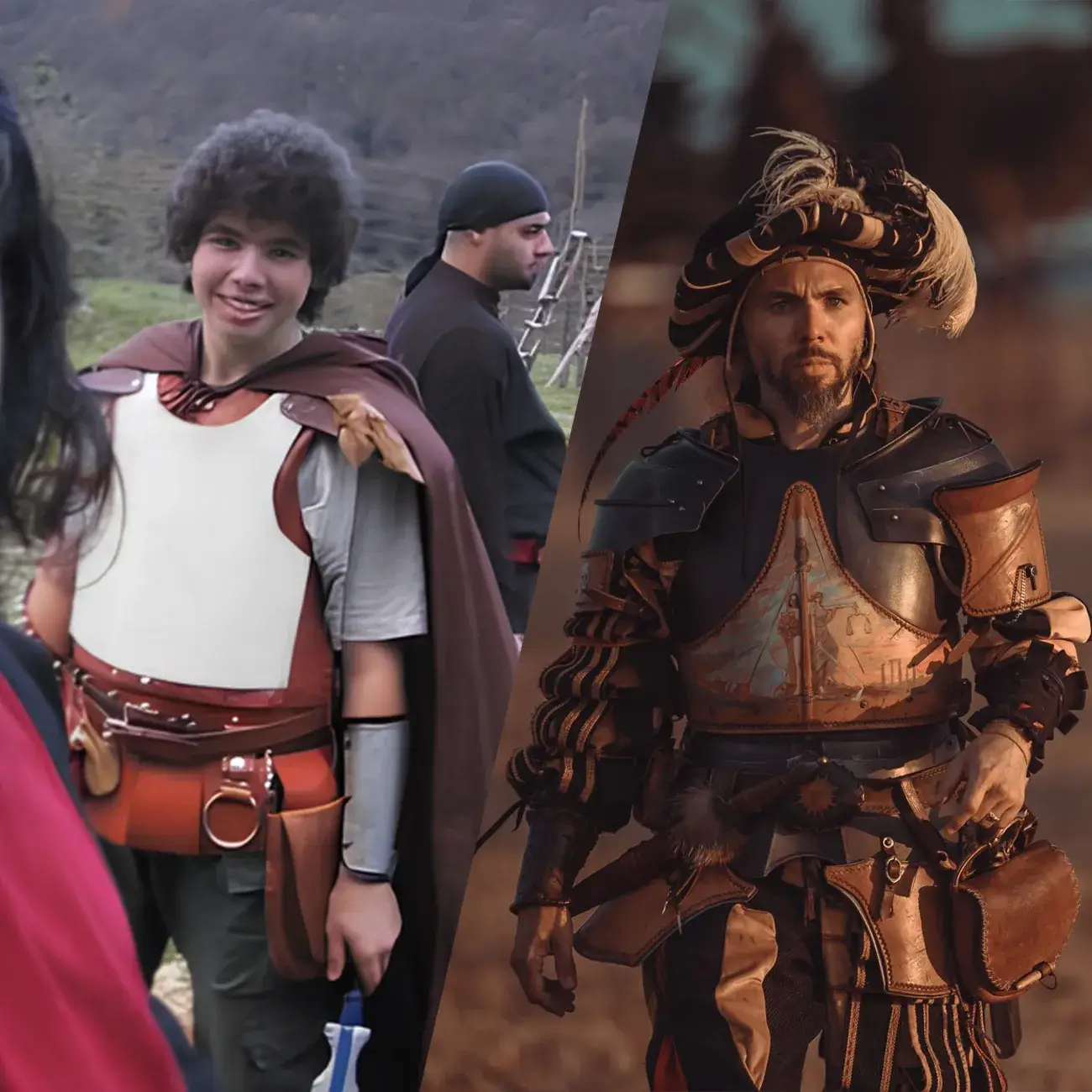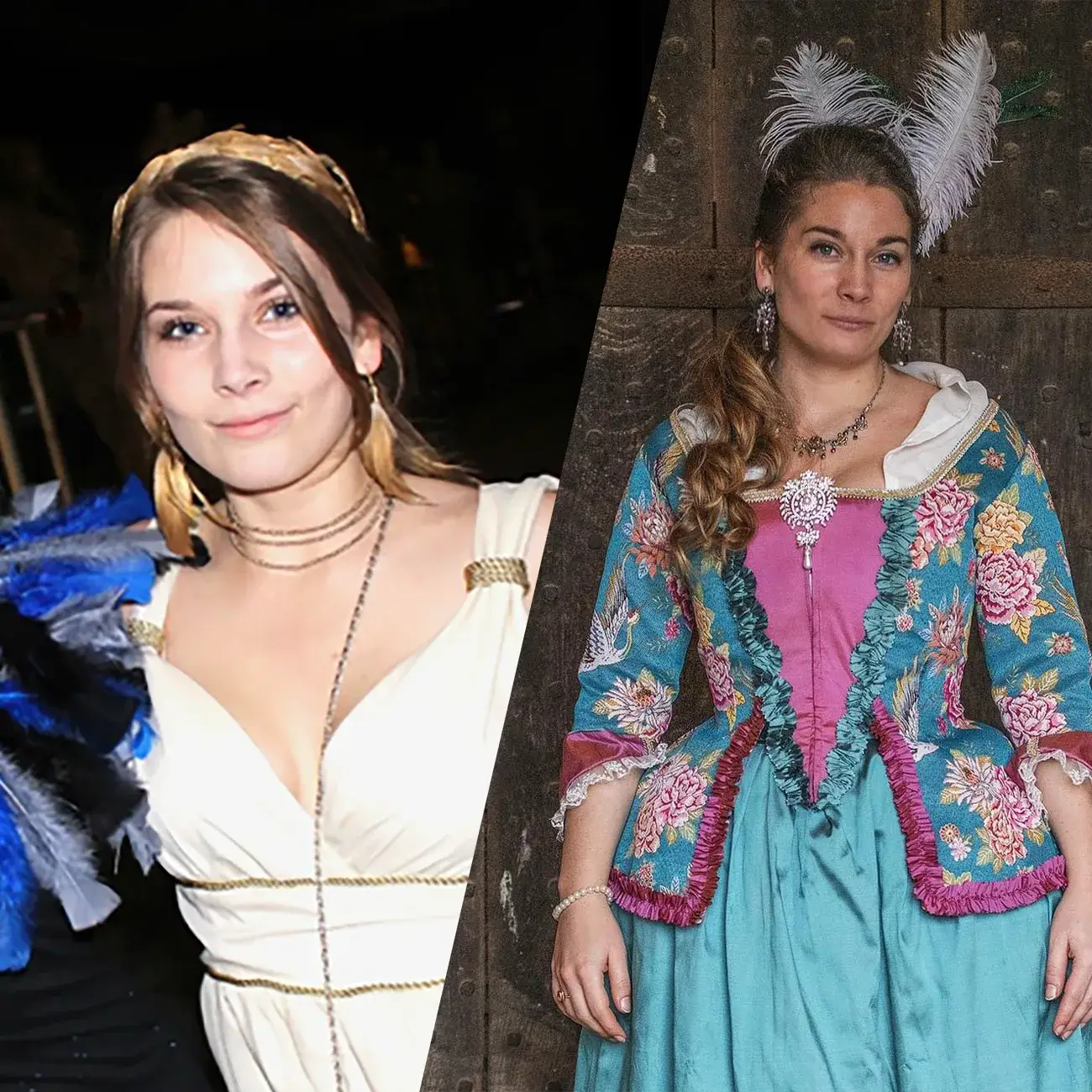
COSTUMED CHRONICLES
Have you ever observed how the attire of a character in a grand tale reveals their very essence?
In the enchanted realm of immersive gaming, your garb performs this very magic!
It is not merely about presenting a striking appearance; it is about weaving the very narrative of your character into every thread and seam.
A CHARACTER STORY BOARD
Imagine your costume as a living timeline of your character's grand journey! Picture the seasoned warrior’s armour, etched with the scars of countless battles fought and won. Envision the young mage's cloak, adorned with mystical symbols sewn after mastering formidable spells. Every addition to your costume weaves a new chapter into your character’s epic saga.
Think of your attire as a canvas, each patch, tear, and trinket telling a story. Did you earn a medallion from a village you heroically saved? Or perhaps you claimed a piece of your enemy’s banner as a trophy? These details not only enhance your look but enrich your connection to your character's narrative.

Gabriele Stazi is head of development at Iron Fortress and started larp as a young teenager. As he learned new skills, his costumes evolved as well.
Tips for weaving your story into your costumes:
- Weathering Techniques: Make your costume appear as if it's been through many adventures! Fray the edges, add dirt stains, or use sandpaper for a worn effect.
- Symbolic colours: Colours can convey much about your character. Choose earthy tones for a grounded warrior or vibrant hues for a flamboyant bard.
- Speak with every stitch: Embroider cryptic symbols representing powerful spells or add trinkets hinting at your character's past.
By incorporating these tips, your costume transforms from a mere disguise to a storytelling masterpiece. It will draw you deeper into the game, sparking conversations and forging connections with fellow players.
Video: How to give your costume a used look with regular household items.
Elevate your look
Headline
CRAFTING YOUR DREAM COSTUME
Know your world
Before you wield scissors and thread, immerse yourself deeply into your character's realm. For LARPers, ponder your character’s faction, backstory, and social standing. Reenactors, meticulously study your chosen period – clothing styles, fabrics, and construction methods varied greatly through the ages. Fantasy enthusiasts, delve into the rich tapestry of your chosen world – is your character a noble elf or a rugged barbarian? This research shall guide your design choices, ensuring historical accuracy for reenactors or a cohesive world aesthetic for fantasy realms.
Planning is paramount
Do not underestimate the power of meticulous planning! Sketch your costume, noting materials, colours, and embellishments. Budget wisely – thrift stores and online marketplaces are treasure troves of unique pieces. Consider your comfort – will you be battling foes or enduring lengthy events? Opt for breathable fabrics and practical designs to suit your needs.
Tailoring your approach
There is no single path to the creation of costumes! Some delight in crafting every piece from scratch, while others masterfully modify existing garments. Do not fear combining approaches! Utilise your unique skills – perhaps you are adept at sewing and can alter thrifted finds, or maybe your expertise lies in crafting armour or accessories.
Crafting tips
- Embrace versatility: Design separate elements (different colour detachable sleeves for instance) that can be mixed and matched for different characters or events.
- The power of accessories: Elevate your costume with custom belts, pouches, and jewellery.Go to craft and dollar stores for bits and pieces!
- Weather the elements: Consider weatherproofing your costume for outdoor events. Fabric sprays and seam sealing can be lifesavers.
- Don't be afraid to experiment: Embrace trial and error – it's all part of the creative process.
- YouTube Tutorials: There's a wealth of tutorials online! Find one that matches your skill level and the type of garment you're creating. Pay attention to how they handle seams, closures, and finishing touches.
- Ironing: Ironing your fabric before and after sewing ensures smooth seams and professional-looking results. It also helps you lay your fabric flat for accurate cutting.
Video: Interesting insights from Fell & Fair on what kin of fabric to choose for your costume building.
Community is key
The world of costume creation is brimming with talented individuals! Don't hesitate to seek advice from experienced customers or online communities. Share your creations, inspire others, and learn from their expertise.
And if you have no clue where to look, we recommend taking a look at our friends at Fell & Fair, who skillfully connect single pieces to a full costume, and with rich experience to share, on how to complete your set and make the right choices of material. Take a look at their video here.
Remember, creating a costume is a journey, not a destination. Embrace the process, enjoy your creativity, and most importantly, have fun!
HISTORICAL ACCURACY vs. ARTISTIC EXPRESSION
In the realms of historical reenactment and medieval/fantasy costuming, the delicate dance between accuracy and artistic licence is a constant conversation.
Striking the right balance is crucial for crafting garments that resonate with both authenticity and captivating design.
Historical accuracy
For the devoted reenactor, historical accuracy is paramount. It allows us to journey back in time, to truly embody the people of the past. Meticulous research into clothing styles, fabrics, and construction techniques ensures a level of authenticity that transports both viewers and participants. This dedication honours the past and teaches us about the way people lived.

Lisa Wolfrum is a content creator at Iron Fortress and made her first costume for a high school dress-up party. Today she sews her own historical costumes for reenactment and larp.
Artistic expression
Yet, some prefer the enchantment of artistic expression in costuming. Fantasy enthusiasts, for instance, may draw inspiration from historical periods while infusing them with fantastical elements. A good example of this are the costumes in the Netflix drama, Bridgerton, which draws inspiration from 18th and 19th century costuming but takes great creative liberty. Reenactors, too, might subtly modify garments to allow for greater movement during battle reenactments. Having a good grip on what is expected at the event you intend to wear your costume at is important.
Finding the perfect blend
So, how do we strike the right balance? Here are some guiding principles:
- Know your audience: Consider who will be viewing your costume. Reenactors aiming for historical accuracy should prioritize documented styles as often their costumes consitute grounds for educating curious tourists about the period they re-enact. Fantasy enthusiasts have more freedom to play with historical and fantastical elements.
- Subtlety: Even small flourishes of artistic license can make a big impact. Modifying a sleeve silhouette or adding a unique belt buckle can showcase your creativity without sacrificing historical context.
- Material matters: Fabrics and construction techniques often tell a historical story. Using historically accurate materials, even with a slightly modified design, can maintain a sense of authenticity.
- Embrace Interpretation: Historical records can be fragmentary, leaving room for interpretation. Even in the middle ages, if you were getting your portrait painted, you'd dress in your finest clothing, not your daily wear. Use your research as a foundation, then let your creativity fill in the gaps.

 Denmark
Denmark
 United States
United States
 United Kingdom
United Kingdom
 Germany
Germany
 Sweden
Sweden
 Norway
Norway
 Åland
Åland
 Australia
Australia
 Austria
Austria
 Belgium
Belgium
 Brazil
Brazil
 Bulgaria
Bulgaria
 Canada
Canada
 Canary Islands
Canary Islands
 Chile
Chile
 China
China
 Croatia
Croatia
 Cyprus
Cyprus
 Czech Republic
Czech Republic
 Estonia
Estonia
 Faroe Islands
Faroe Islands
 Finland
Finland
 France
France
 Greece
Greece
 Greenland
Greenland
 Hungary
Hungary
 Iceland
Iceland
 India
India
 Indonesia
Indonesia
 Ireland
Ireland
 Israel
Israel
 Italy
Italy
 Japan
Japan
 Kuwait
Kuwait
 Latvia
Latvia
 Lithuania
Lithuania
 Luxembourg
Luxembourg
 Malaysia
Malaysia
 Malta
Malta
 Mexico
Mexico
 Montenegro
Montenegro
 Nepal
Nepal
 Netherlands
Netherlands
 New Zealand
New Zealand
 Pakistan
Pakistan
 Peru
Peru
 Poland
Poland
 Portugal
Portugal
 Georgia
Georgia
 Reunion
Reunion
 Romania
Romania
 Serbia
Serbia
 Singapore
Singapore
 Slovakia
Slovakia
 Slovenia
Slovenia
 South Africa
South Africa
 South Korea
South Korea
 Spain
Spain
 Switzerland
Switzerland
 Taiwan
Taiwan
 Turkey
Turkey
 Ukraine
Ukraine
 Puerto Rico
Puerto Rico
 Honduras
Honduras
 Gibraltar
Gibraltar












